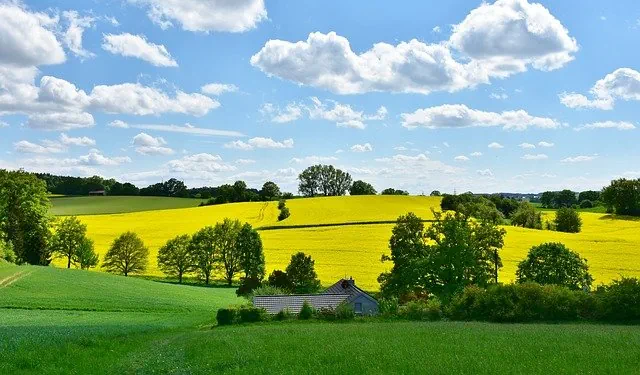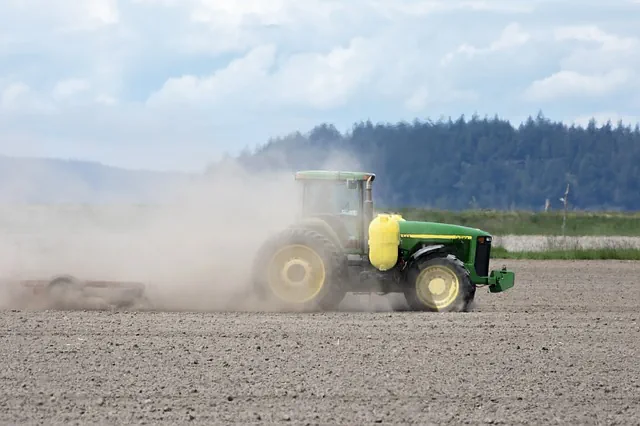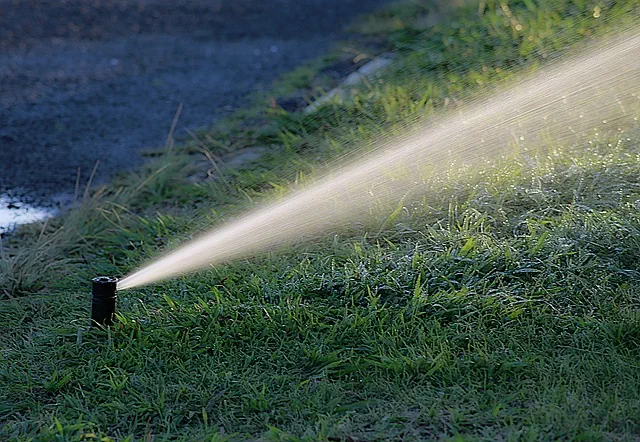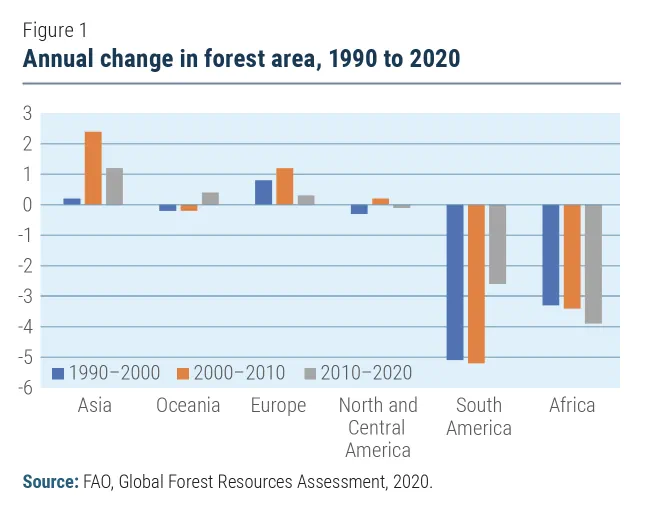
Major Negative Effects of Industrial Agriculture (Including Solutions)

Table of Contents
In the mid-20th century, industrial agriculture seemed to be a technological miracle that would allow food production to keep pace with the growing human population worldwide. It remains a dominant food production system in the US and many parts of the world to date due to its perceived efficiency and reliability. Nonetheless, the known adverse effects of industrial agriculture leave no doubt that it comes with undesirable costs.
This article explores what industrial agriculture stands for today and its negative impact on the Earth. Moreover, it takes a deep look at the most practical ways to deal with the dilemma it presents. Now let’s dive into the details.
What is Industrial Agriculture?
The term ‘industrial agriculture’ refers to varied intensive farming practices used today to support the increasing demand for food and maximize profits. Industrial farms typically rely on harmful practices like excessive use of insecticides and fertilizers to achieve their food production milestones. They also maximize yields through extensive irrigation, new farming fields, planting high-yield species, and more.
Commercial agricultural enterprises mainly treat agriculture as a business. They are prepared to do everything within their means to make the most out of every unit of their land. This capitalistic attitude is partly responsible for the negative consequences of this farming system on the environment.

Large tract of farmland
You can see that industrial agriculture offers lots of benefits, including higher yields. Unfortunately, its adverse effects appear to outweigh its long-term benefits. In the following few sections, we look at the most common adverse effects of industrial agriculture on life. Let’s start with its impact on human health.
7 Biggest Agriculture Companies in the World (2022)
| Name | Founded | Headquarters | Revenue |
|---|---|---|---|
| Cargill | 1865 | Minnesota, United States | $114.7B |
| ADM | 1902 | Minnesota, United States | $85.27B |
| Bayer | 1863 | Leverkusen, Germany | 44B € |
| John Deere | 1837 | Illinois, United States | $37B |
| CNH Industrial | 2012 | London, United Kingdom | $28B |
| Syngenta | 2000 | Basel, Switzerland | $16.7B |
| DuPont | 2017 | Delaware, United States | $6.52B |
Threatens Human Health
Since human beings depend on industrial agriculture for food, a large chunk of the world’s population is likely vulnerable to the risk of ingesting poisoned food products. The chemicals used to maximize yields are harmful. Moreover, these farming practices can expose almost everyone to serious health risks. Let’s see more on this below.
-
Junk food: In most parts of the world, especially in the central US, farmers rely on industrial agriculture to produce soybeans, corn, and other commodity crops. Food processors use these crops to make the junk foods that dominate the local food market. Science links these foods with several adverse health effects, including cancer.
-
Antibiotic resistance: The current overuse of antibiotics has led to an increase in the development of antibiotic-resistant bacteria, which threatens human life and the stability of health care systems across the world.
-
Water pollution: Whenever it pours, the excess fertilizers contaminate downstream drinking water supplies. The misuse of pesticides has the same impact on the quality of water we use. Due to this, the US spends approximately USD 2 billion per year to mitigate the chemicals’ effects.
-
Air pollution: Industrial agriculture accounts for at least 37% of methane emissions. This greenhouse gas can increase global warming 20 times higher than carbon dioxide (CO2). Moreover, the fossil fuels used in fertilizers, pesticides, and the likes emits an average of 90 million tons of CO2 every year into the atmosphere.

Tractor pollutes the air
Moreover, industrial agriculture increases the production of other harmful compounds, including ammonia and hydrogen sulfide, which can adversely affect animals and humans.
Note that water and air pollution due to industrial agriculture is the leading cause of long-term illness and acute poisoning.
Destroys Farmland and the Environment
The Midwestern US, popularly known as the Corn Belt, has been celebrated for its high organic soil concentration and deep fertile soils. Unfortunately, industrial agriculture is presently treating this essential resource as something to be tapped, not maintained. It treats other viable lands in the US and across the land in the same way, leading to the following problems worldwide:
-
Resource depletion: single-crop farms have come out of this new agricultural system, which exhausts soil fertility. For farmers to thrive, they have to spend a lot on fertilizers, which are often dangerous chemicals. With time, the world might lose all its viable farmlands due to the overuse of these artificial fertility solutions.
-
Irrigation: Irrigation costs have increased since farmers till their lands throughout the year. In the past, farmers only planted during the rainy season.

Farm relies on irrigation
-
Erosion: Since monoculture degrades soil structure, it increases farms’ vulnerability to soil erosion. So, industrial agriculture leaves governments and farmers struggling to replace the lost farmland value.
-
Lost biodiversity: Diverse farms are a great solution since they support a rich range of life. Industrial farms, on the other hand, don’t do that. For that reason, the increase in the adoption of the new farming system leads to the shortage of essential ecosystem services like pollination.
As you can see, industrial agriculture reduces the value of farmland and the environment. As such, it might lead to another round of mass extinction if the world fails to take the appropriate action within the right time.
Entrenches Inequality
Since many people currently view industrial agriculture as a business, the capitalist mindset characterizes this farming system. Communities that can’t “get big” are forced to “get out.” This takes a toll on most communities since the majority lack the economic power to conform. In the end, industrial agriculture leaves many people starving.
Here are how this system does this:
-
Loss of small-sized farms: Small- and mid-sized farms were once part of the US agricultural system. Today that is no longer the case. The pressure to expand or ship out has threatened the existence of these farms. This trend has adversely impacted the economy of rural and farm states. As you can see, the demand for resources to protect the environment is on the increase. On the other hand, industrial agriculture has a negative economic impact on the community. So, it limits the ability of individuals and governments to the right strategists geared towards preserving the Earth.
-
Destruction to neighboring economies: Industrial agriculture can have a negative impact several miles from its origin. For example, it forces local governments to install expensive equipment to remove pesticide by-products from drinking water suppliers several miles away from where industrial agriculture is practiced.
Another good example is the effect of industrial agriculture on fishing and tourism. People who make a living in places where farm runoffs cause dead zones and toxic algae to bloom, like on the Gulf of Mexico, experience lots of these troubles. Most of their lands aren’t fertile any longer, putting the sustainability of the local ecosystems at risk.
So, at the end of the supply chain, the poor may have access to affordable but invariable nutrient-deficient foods. Micronutrient deficiencies typically lower people’s resistance to diseases, impair cognitive development, and increase risks during childbirth. Ultimately, this hurts economic productivity. In this regard, industrial agriculture disadvantages the poor as producers and consumers.
Destroys Forest Cover

Forest protects the land
Deforestation is a negative impact of industrial agriculture that deserves specialized attention. Remember, farmers in the US alone have cleared over 260 million acres of forests to maximize their income. Most of the land has been set aside for growing livestock feed.
Note that deforestation doesn’t only occur in the United States. In Brazil, industrial agriculture is responsible for the destruction of close to 3 million acres. More than 100 million hectares of the Amazon forest have been cleared to create room for soybean farming.
The carbon released into the atmosphere due to the destruction of forests in Brazil is enough to increase global warming by 50%.
Deforestation also often has negative consequences on indigenous people. Since the clearing of forests promotes soil erosion, floods destroy their homelands. This means that indigenous communities who live in forests and depend on them for survival leave under a significant threat.
Remember, since plants play an essential role in the food chain, anything that adversely affects their health threatens the existence of all living things.

Annual change in forest area 1990-2020 Source
Drives Climate Change
Industrial agriculture is a significant driver of global climate change. As we’ve mentioned in brief above, it speeds up soil erosion. Besides, due to improper carbon sequestration, misuse of water and farming land, and overdependence on fossil fuels, industrial agriculture escalates the pollution of the environment in general. The increased amount of carbon in the atmosphere hinders the reflected light from the Earth from escaping back to Space, thereby leading to climate change and global warming.
What You Should Do?
There’s no doubt that industrial agriculture can help the world to feed its growing pollution. Business people can also take advantage of this system to make a kill. On the other hand, the adverse effects of industrial agriculture that we’ve seen above leave no doubt that it’s an unsustainable farming system. So, whichever option we choose, we’re highly likely to lose something important.
Since everyone needs a balanced diet, the ideal option is to mitigate the adverse effects of industrial agriculture with precision farming technologies. Governments need to make balanced decisions that ensure people have adequate access to basic needs, including food, without adversely harming the environment.
At a personal level, you should consider reducing your meat-based diet budgets and stopping the misuse of pesticides and fertilizers. You could also do well if you plant more trees and avoid deforestation. Overall, we should adopt sustainable farming methods as a matter of urgency to preserve the Earth for the sake of many generations.